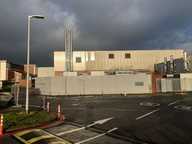The Climate Change Committee’s progress report in 2021 recommended that Government prioritise this area by providing a long-term policy framework to support increased energy efficiency and growth in the use of heat pumps.
There needs to be acceleration of the pace and scale of decarbonising new and existing homes and other buildings in the North East through a combination of design, technology and retrofitting insulation and new energy and heat sources.
Taken together the current energy, cost-of-living and climate crises means reducing emissions from buildings is vital to secure national energy resilience and to bring down bills of businesses and domestic consumers alike. This in turn creates an opportunity to reduce the region’s reliance on fossil fuels and drive forward on some of the new technologies being brought forward in the region.









